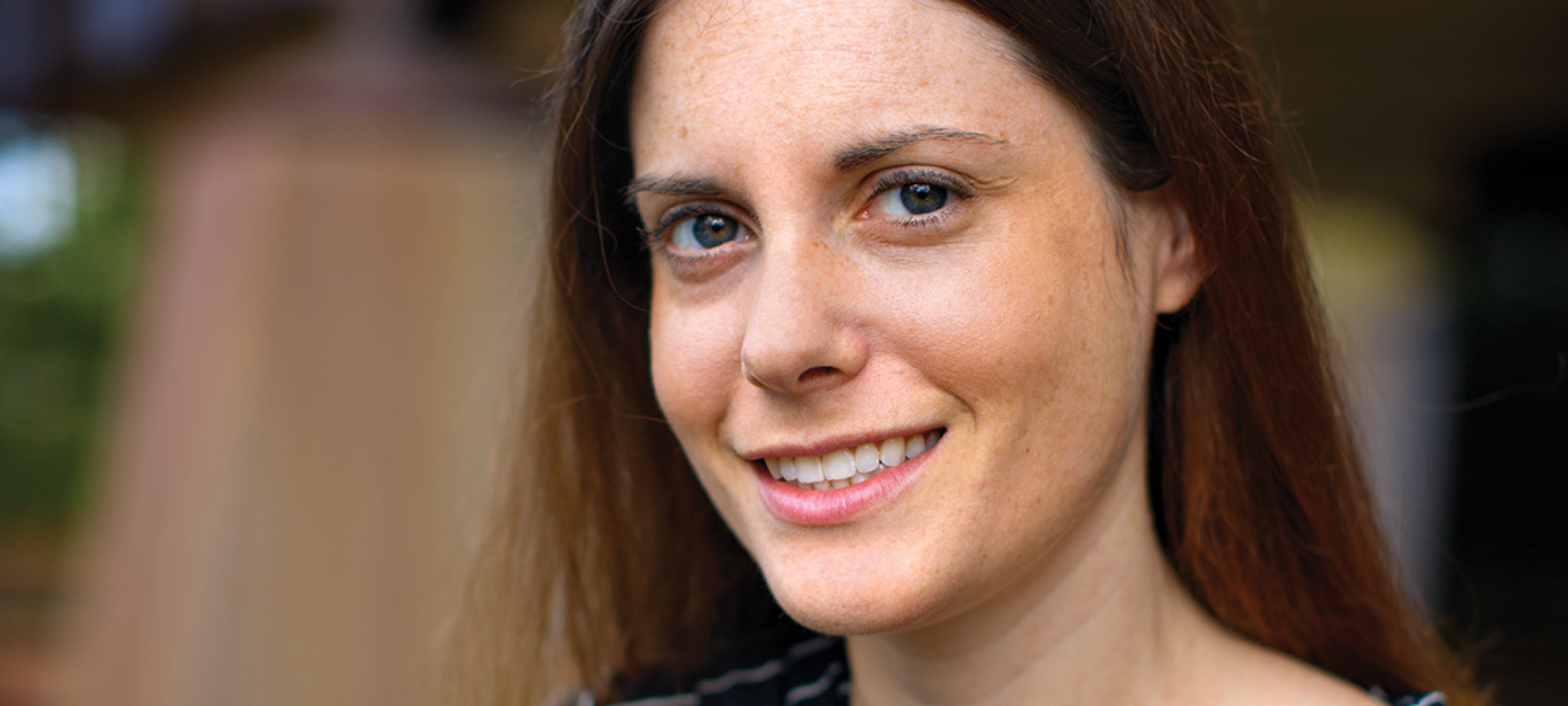
Katherine Kinzler’s language research focuses on babies and young children. (Photo courtesy Cornell University)
Psychology professor Katherine Kinzler examines how we react to each other’s speech.
While taking a language class in Zagreb, Croatia, in the summer of 2003, Katherine Kinzler noticed something surprising. Although Croatians, Serbians, and Bosnians speak closely related and mutually intelligible languages, her teachers emphasized linguistic differences, not similarities, often pointing out which turns of phrase were characteristically Serbian or Croatian. “As cultures diversify—or social groups are in conflict—their languages follow suit,” Kinzler says.
The experience would have lasting effects on Kinzler, a psychology professor and director of the Development of Social Cognition Laboratory, shaping the direction of her research and making its mark on her first book, How You Say It: Why You Talk the Way You Do—and What It Says About You (Houghton Mifflin Harcourt, 2020), which came out in July.
When Kinzler returned from Croatia to start graduate school, she began to explore how language unites and divides social groups. She has spent much of the past 17 years attempting to answer that question.
Language, Kinzler has found, can be a proxy for existing divisions, solidifying group boundaries in ways speakers don’t always recognize. People with a prejudice against African American English, for example, may not think they’re racist. “It can be a really insidious form of racism because people think they’re just saying, ‘Oh, I just don’t like the way someone talks—that’s not racist,’” Kinzler says. “But your reactions to somebody’s speech are embedded in a structural notion of racism.” In general, when we hear someone speak differently from us, we tend to other them—even if we don’t have any particular stereotypes to assign to them.
Multilingualism may counter some of these divisive impulses. Kinzler’s research has shown that children who are exposed to linguistic diversity at an early age, or raised in a multilingual environment, are better at listening to and understanding the perspectives of others than children who are not exposed to another language. (Because her research focuses on babies and children, she’s not sure if this effect persists into adulthood.)
In one study, Kinzler and her coauthors—Zoe Liberman, AM’13, PhD’16; Amanda Woodward, the William S. Gray Distinguished Service Professor of Psychology and dean of the Social Sciences Division; and Boaz Keysar, the William Benton Professor of Psychology—examined how multilingual exposure influenced communication skills in 14-to-17-month-old infants. Of the 64 infant participants, half came from monolingual English-speaking households, while the other half were regularly exposed to English and at least one other language.
Parents held their infants and were seated across the table from an English-speaking researcher. Between them were two objects; the infant could see both, but the researcher, blocked by an opaque barrier, could only see one. The researcher then asked the infant to hand them the mutually visible object—meaning that the infants had to consider the researcher’s perspective in order to understand the meaning of the request. The study found that infants with multilingual exposure reliably chose the object the researcher had requested.
In another paper, Kinzler and her coauthor, Jocelyn B. Dautel, AM’07, PhD’13, studied how children perceive race and language. They designed an experiment where participant children saw a photo of either a White or Black child, paired with a voice clip in English or French. Then participants were asked which of two adults the photographed child would grow up to be—one who shared that child’s race or one who shared that child’s language. In other words, participant children had to decide which category was more meaningful: race or language.
Kinzler and Dautel found that older White children, ages 9 and 10, reliably chose the racial match. But the pattern didn’t hold among younger White children, ages 5 and 6: they chose the language match, suggesting a “surprising intuition about the stability of an individual’s language as compared to [their] race,” the study said. Younger Black children, by contrast, chose the racial match—presumably, the researchers write, because they already have “different experiences with race as a meaningful social category” as compared to White children.
In the course of her research, Kinzler has noticed that White parents can become very uncomfortable when their children exhibit preferences for White faces. (Of course, she notes, the children don’t necessarily know what they’re doing.) But when she conducts studies where children prefer people who speak without a foreign accent, nobody balks.
How You Say It includes observations from legal scholar Mari Matsuda about the long-term consequences of foreign accent bias, which she describes as “commonplace, natural, and socially acceptable. … People who know of my strong commitment to civil rights felt no hesitation in telling me things like ‘I couldn’t have someone who sounds like that represent our law school’ or ‘People who talk like that sound so dumb.’” It doesn’t occur to many Americans that accent bias is a pernicious form of prejudice.
Kinzler thinks everyone, and parents in particular, can benefit from exposure to multiple languages and accents. “It’s easy to retreat into monolingual English-speaking society,” she says. “And yet we have so much linguistic diversity, and that’s a benefit to us and it’s a benefit to our children.”
